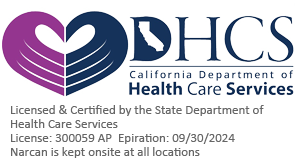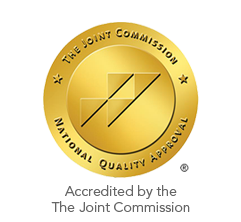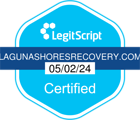Personality Disorder Recovery in Orange County, CA
relationship can seem confusing, especially for those who are new to the topic. In California and beyond, the overlap of these conditions is a common and important area of research and treatment.
Learning about personality disorders and their connection to addiction helps clarify why treatment approaches often address both issues at the same time. These conditions can affect anyone, regardless of age, background, or circumstances. At Laguna Shores Recovery, we understand the complex nature of dual diagnosis and provide specialized care for individuals facing both personality disorders and substance use challenges.
Personality disorders are long-lasting patterns of thinking, feeling, and behaving that are different from what most people in your culture expect. These patterns start in your teens or early twenties and cause problems in relationships, work, and daily life. Unlike temporary mood changes, personality disorders remain consistent over time and across different situations.
About 45-60% of people with substance use disorders also have a personality disorder. When both conditions happen together, doctors call this comorbidity or dual diagnosis. This overlap isn’t just a coincidence – several factors make both conditions more likely to develop:
- Genetic vulnerability: Some people inherit genes that make them more likely to develop both conditions.
- Trauma history: Childhood abuse, neglect, or other traumatic experiences increase the risk for both personality disorders and addiction.
- Self-medication: People often use drugs or alcohol to cope with difficult emotions or symptoms from their personality disorder
The connection between these conditions means that treating just one while ignoring the other often leads to poor results. Both conditions influence each other, making integrated treatment approaches more effective.
Types of Personality Disorders Most Linked to Addiction
Borderline personality disorder (BPD) involves intense emotions that change quickly, fear of being abandoned, unstable relationships, and sometimes self-harm. People with BPD often feel empty inside or experience emotional pain that feels unbearable.
About 78% of people with BPD develop a substance use disorder at some point in their lives. They often turn to drugs or alcohol to:
- Numb overwhelming emotions
- Fill feelings of emptiness
- Cope with relationship conflicts
- Manage fear of abandonment
The impulsivity that comes with BPD makes it harder to stop using substances once someone starts. This combination creates a cycle where emotional distress leads to substance use, which then creates more problems and distress.
Antisocial personality disorder involves a pattern of ignoring other people’s rights, breaking rules or laws, and acting impulsively without thinking about consequences. People with this condition often have trouble following social norms and may engage in risky behaviors.
The connection between antisocial personality disorder and substance abuse is strong, with rates as high as 90% in some studies. Common patterns include:
- Using stimulants like cocaine or methamphetamine
- Drinking alcohol excessively
- Engaging in illegal drug activities
- Using substances during criminal behavior
The impulsivity and risk-taking that define antisocial personality disorder make substance use more likely and harder to control.
Narcissistic personality disorder involves an inflated sense of self-importance, constant need for admiration, and difficulty understanding other people’s feelings. People with this condition often believe they’re special or superior to others. Substance use in narcissistic personality disorder often serves specific purposes:
- Maintaining a grandiose self-image
- Coping with criticism or failure
- Enhancing feelings of superiority
- Numbing shame or inadequacy
Alcohol is the most common substance used by people with narcissistic personality disorder, partly because it’s socially acceptable and can temporarily boost confidence.
Signs of Personality Disorders and Addiction
Recognizing co-occurring disorders can be challenging because symptoms overlap and mask each other. However, certain patterns often appear when both conditions are present.
- Extreme impulsivity in both relationships and substance use
- Repeated legal or financial problems
- Difficulty maintaining jobs or housing
- Frequent conflicts with family, friends, or coworkers
- Intense mood swings that seem unrelated to substance use
- Chronic feelings of emptiness, anger, or hopelessness
- Emotional reactions that seem extreme for the situation
- Using substances specifically to manage emotions
- Unstable or chaotic relationships
- Social isolation or withdrawal from activities
- Difficulty trusting others, including healthcare providers
- Problems following through on commitments or responsibilities
When personality disorder traits and substance use problems persist even during periods of sobriety, this suggests both conditions may be present and require dual diagnosis treatment.
Why Integrated Dual Diagnosis Treatment Works
Treating personality disorders and addiction separately often fails because these conditions reinforce each other. Integrated treatment addresses both conditions at the same time using coordinated care approaches.
- Personality disorder symptoms remain untreated
- Emotional instability can trigger relapse
- Underlying relationship and behavioral problems continue
- Higher risk of returning to substance use
- Ongoing substance use interferes with therapy progress
- Medications may not work effectively
- Risk of overdose or medical complications remains high
- Cognitive impairment from substances affects learning new skills
Integrated care models use evidence-based treatments designed specifically for people with both conditions. Research shows this approach leads to better outcomes, including longer periods of sobriety, improved relationships, and better overall functioning.
Most Effective Therapies for Dual Diagnosis
Dialectical behavior therapy (DBT) was created for borderline personality disorder, but has proven effective for people with various personality disorders and addiction. DBT teaches four main skill areas:
- Mindfulness: Learning to stay present and aware without judgment
- Distress tolerance: Managing crises without making them worse
- Emotion regulation: Understanding and managing intense emotions
- Interpersonal effectiveness: Communicating needs and maintaining relationships
DBT works particularly well for people who use substances to cope with emotional pain. The skills learned in DBT provide healthier alternatives to drug and alcohol use.
Cognitive behavioral therapy (CBT) helps people identify and change thought patterns and behaviors that contribute to both personality disorders and addiction. In dual diagnosis treatment, CBT focuses on:
- Recognizing triggers for both emotional distress and substance use
- Developing coping strategies that address both conditions
- Changing negative thought patterns that fuel both problems
- Building problem-solving skills for daily challenges
CBT can be adapted for different personality disorders while still addressing substance use patterns.
While no medications cure personality disorders, certain medications can help manage symptoms that contribute to substance use:
- Mood stabilizers: Help reduce emotional instability and impulsivity
- Antidepressants: Address depression and anxiety that often accompany both conditions
- Anti-anxiety medications: Used carefully to avoid creating new dependencies
Medication works best when combined with therapy and is most effective in integrated treatment programs where all providers coordinate care.
Finding Dual Diagnosis Treatment in Orange County, California
California offers extensive resources for people with co-occurring personality disorders and addiction. The state’s mental health parity laws require insurance companies to provide equal coverage for mental health and substance use treatment.
When looking for treatment, consider these factors:
- Accreditation: Look for programs accredited by organizations like The Joint Commission or CARF
- Specialized training: Ensure staff have experience treating both personality disorders and addiction
- Integrated approach: Verify that the program treats both conditions simultaneously rather than separately
- Evidence-based practices: Ask about specific therapies like DBT, CBT, or other proven treatments
California’s Department of Health Care Services maintains directories of licensed treatment providers, and many programs offer insurance verification services to help determine coverage options.
Personality Disorders and Addiction FAQs
Yes, people with borderline personality disorder can achieve lasting recovery from addiction. However, they typically need specialized dual diagnosis treatment that addresses both conditions together. Dialectical Behavior Therapy has shown particularly strong results for this combination.
Treatment length varies based on individual needs, but dual diagnosis treatment typically takes longer than treating addiction alone. Most people benefit from at least 90 days of intensive treatment, followed by ongoing outpatient care and support groups for several months or years.
When personality disorders go untreated, people have much higher relapse rates. The emotional instability, relationship problems, and behavioral patterns that characterize personality disorders often trigger a return to substance use. This is why integrated treatment produces better long-term outcomes.
No single medication treats both conditions, but certain medications can help manage symptoms that contribute to both problems. Mood stabilizers, antidepressants, and carefully monitored anti-anxiety medications may be part of a comprehensive treatment plan that includes therapy and other supports.
Receive Help for Co-Occurring Disorders at Laguna Shores Recovery
Contact Laguna Shores Recovery to learn more about our dual diagnosis programs and verify your insurance coverage.

 Matthew Beck B.A, M.A, LMFT
Matthew Beck B.A, M.A, LMFT 


